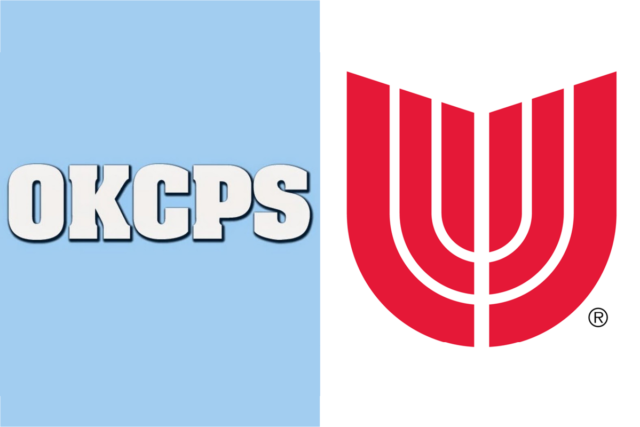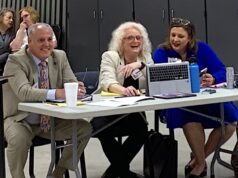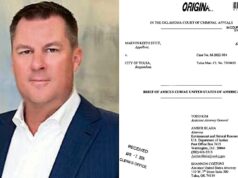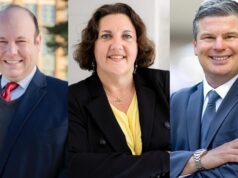Over the weekend, The New York Times featured David Kirp’s op-ed (Who Needs Charters With Public Schools Like These?) about what is working in the Tulsa Union Public School System. In the article, Kirp and Tulsa Union explain what it will take for our state and our schools to flourish in the 21st century.
Kirp, a professor at UC Berkeley and senior fellow at the Learning Policy Institute, starts with a description of an elite high school student writing an algorithm for an iPad video game.
Just kidding! Actually, Kirp is watching a 7-year-old at a high-poverty Tulsa school with a large percentage of English language learners. The second-graders use multimedia technology to learn how an “algorithm is like a recipe.” They will eventually design the recipes that we will need to prosper in the global marketplace.
A couple of fifth-graders guided Kirp around their community school. He suggested Secretary of Education Betsy DeVos should take the same tour. Kirp writes that DeVos “dismisses public schools as too slow-moving and difficult to reform,” but Tulsa demonstrates the nimbleness (and I’d say common sense) necessary to reject instruction-driven, test-driven, competition-driven shortcuts that require schools to build an academic edifice before laying the prerequisite foundation that enables meaningful teaching and learning.
Kirp also learns that Tulsa Union’s “STEM-for-all” is working wonders. It is “only one of the eye-opening opportunities” the district provides.
The author notes that:
Union has accomplished all this despite operating on a miserly budget. Oklahoma has the dubious distinction of being first in the nation in cutting funds for education, three years running … Union spends just $7,605 a year in state and local funds on each student. That’s about a third less than the national average.
As would be the case if the OKCPS followed Union’s humane and science-based path, such excellence requires courage and community partners.
Heresy: The first step to meaningful change
The Times describes the first essential steps that Tulsa took toward meeting the challenges that its poorest children face. The all-important first step would cost OKC nothing in terms of money. Until recently, however, it would have been prohibitively risky in terms of education leaders’ careers.
It should seem obvious that a foundation of student supports must be laid before meaningful instruction can be offered to all children. It’s been more than a generation since Nobel Prize laureate James Heckman (who attended high school in OKC) documented the importance of socio-emotional learning.
But it must have been frightening, more than a decade ago, when former Union Superintendent Cathy Burden articulated the heresy, “focusing entirely on academics wasn’t enough, especially for poor kids.” Rather than try to salvage the teach-to-the-test pedagogies of the past 15 years, Tulsa Union rejects the narrowing of the curriculum to bubble-in instruction and embraces a “cornucopia of activities — art, music, science, sports, tutoring.”
Community schools provide foundation for success
As reported by Kirp, Tulsa Union subsequently won acclaim for investing in community schools. These schools serve as “neighborhood hubs” and:
- provide health care access in the school or nearby;
- connect parents to job-training opportunities;
- deliver clothing, food, furniture and bikes;
- and offer day care for the infants of teenage mothers so they can graduate.
Moreover, these efforts also were the stepping stones toward meaningful, college-readiness learning for all.
Kirp notes Union’s dramatic increase in its graduation rate, but his bigger point is that Tulsa was not content with providing invaluable social services and counselors. Union went on to show that academic excellence “can be achieved when a public school system takes the time to invest in a culture of high expectations, recruit top-flight professionals and develop ties between schools and the community.”
OKC’s Stanley Hupfeld Academy and Edgemere’s promising (though underfunded) community school show that OKCPS can achieve such excellence, but our schools can’t do it alone.
As the Brookings Institute, which is advising Oklahoma City’s Innovation Zone, has shown, community schools and community health institutions could be the “hubs” that spur business development in northeast Oklahoma City. For example, the University of Oklahoma Health Science Center, which also embraces the community health model, could partner with the OKCPS.
A matter of time as much as willpower
The hard fact is that trying to provide STEM or other meaningful learning opportunities without rejecting the doomed educational practices of No Child Left Behind Act is like building a skyscraper on quicksand.
Successful community schools in districts ranging from Union City, New Jersey, to Tulsa Union work because “these ordinary districts took the time they needed to lay the groundwork for extraordinary results,” as Kirp wrote.
To be fair, the OKCPS faces greater challenges than Tulsa Union. On the day of a pivotal school board election, OKCPS’s first steps should be to acknowledge that Tulsa proves:
- Building relationships between students and teachers takes time. From the article: “The curriculum can wait,” said Lisa Witcher, the head of secondary education for Union, to the high school’s faculty last fall. “Chemistry and English will come — during the first week your job is to let your students know you care about them.”
- Non-educators may not realize how much courage it takes for school administrators to say such things aloud. To say that an unflinching focus on instruction is not enough to turn around schools with the highest concentrations of kids from generational poverty, who have endured multiple traumas, is to invite the charge of “low expectations” or the refusal to do “whatever it takes!”
Honestly, I don’t believe OKCPS can emulate their successes until our community says what the district leadership has never dared to admit. We will have to listen to Kirp, Burden and Union Superintendent Kirt Hartzler, who agree, “None of this happened overnight.”
School improvement is an “intentional” and “organic” process, and schooling must become a team effort. As Ed Allen, president of the American Federation of Teachers-Oklahoma chapter, says, school improvement is “a marathon not a sprint.”






















